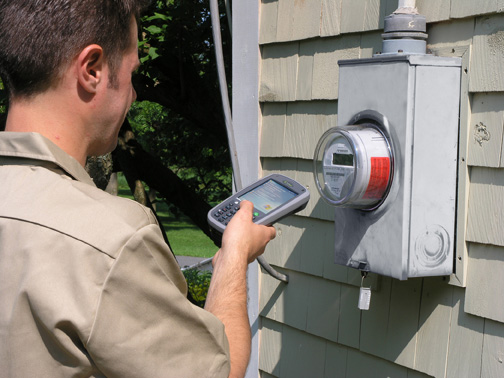When it comes to selecting mobile technology for your business, the decision to just purchase and deploy a mobile device is not enough. Unless your devices are optimally matched to your enterprise requirements and environment, they can hamper the productivity and efficiency of your employees and lead to an increased, unanticipated spend on additional software and replacements. Ultimately, this can substantially limit the benefits your mobile technology investment will deliver to your customers and your business.
Wireless LAN systems coupled with the right mobile technology allows businesses to gain real-time enterprise asset intelligence (EAI) – changing the limits of what you can know about your business. Almost 60 per cent of Australian companies are using a mobile technology to increase productivity and drive down costs,[1] however without purpose built devices many organisations are not able to fully harness the opportunities of EAI.
Enterprise-grade devices are engineered to support specific business use and requirements and are available in a variety of configurations with varying operating systems, keyboard, screen size and connectivity options, giving you total control over the capabilities of your device – but how do you know which solution is best for your business?
- Ensure the correct mobile technology strategy
Recent research conducted by Zebra Technologies in association with IDG Connect, highlights that there is a clear increase in the number of applications being used by field staff. [2] Currently, workers are using an average of five applications, but this is expected to rise to eight over the next two years. So in order to drive productivity and remain competitive, businesses need to ensure this trend is incorporated into their field mobility technology strategies. Maximising efficiency levels can be assured through the correct device selection.
Before making a choice between mobile devices, consider how the device will be used to support a business’s field workers throughout its lifetime and then ensure that the devices that are being considered support all of these activities.
- Address the priorities and concerns
When building a mobile device strategy, there will be a number of priorities and concerns that will need to be addressed.
Topping the list of the major concerns for field mobility in Australia is security. The research results showed that mobile solutions need to provide access to controls that will protect the enterprise if the device falls into the wrong hands, and guard against any viruses or non-vetted applications that could compromise the security of the data stored on the device[3].
Another priority is to enable speed and satisfaction in a manageable way. Companies want to reduce the time spent getting to and from jobs, improve customer satisfaction and enable field staff to report in real-time. Their chosen device therefore needs to support all the applications necessary to facilitate these requirements, from good route planning to real-time notifications and reports.
- Choose the best device
There are numerous consumer-focused smartphones and tablets available today that offer business functionality on tempting terms. One of the main concerns of off-the-shelf devices is security. Zebra’s research revealed that the issues around consumer devices range from security features, how robust they are in an enterprise environment, to battery life.
Ultimately and although off-the-shelf smartphones and tablets offer business capabilities and often appear cheaper than enterprise-grade devices, the reality is that consumer devices don’t offer all the functionality and levels of robustness that field workers need. The total cost of ownership is significantly more.
Enterprise-grade solutions provide access to the latest technologies without needing to deploy brand new devices. They will enable technology to run on old devices and vice versa, allowing for an operating system and applications to keep running on all devices, no matter the model. In addition, they come with the ability to easily switch from one operating system to an updated or completely different one, as requirements need to change over time, without having to deploy new devices.
In return for a successful investment and field mobility strategy, be prepared to choose an enterprise-grade device that can deliver all the functionality necessary.
[1] http://www.businessspectator.com.au/article/2015/7/14/australian-news/why-australia-must-invest-innovation?subscriber=50d72ef6381f51cfd186fbce00153b1fd0433af5













